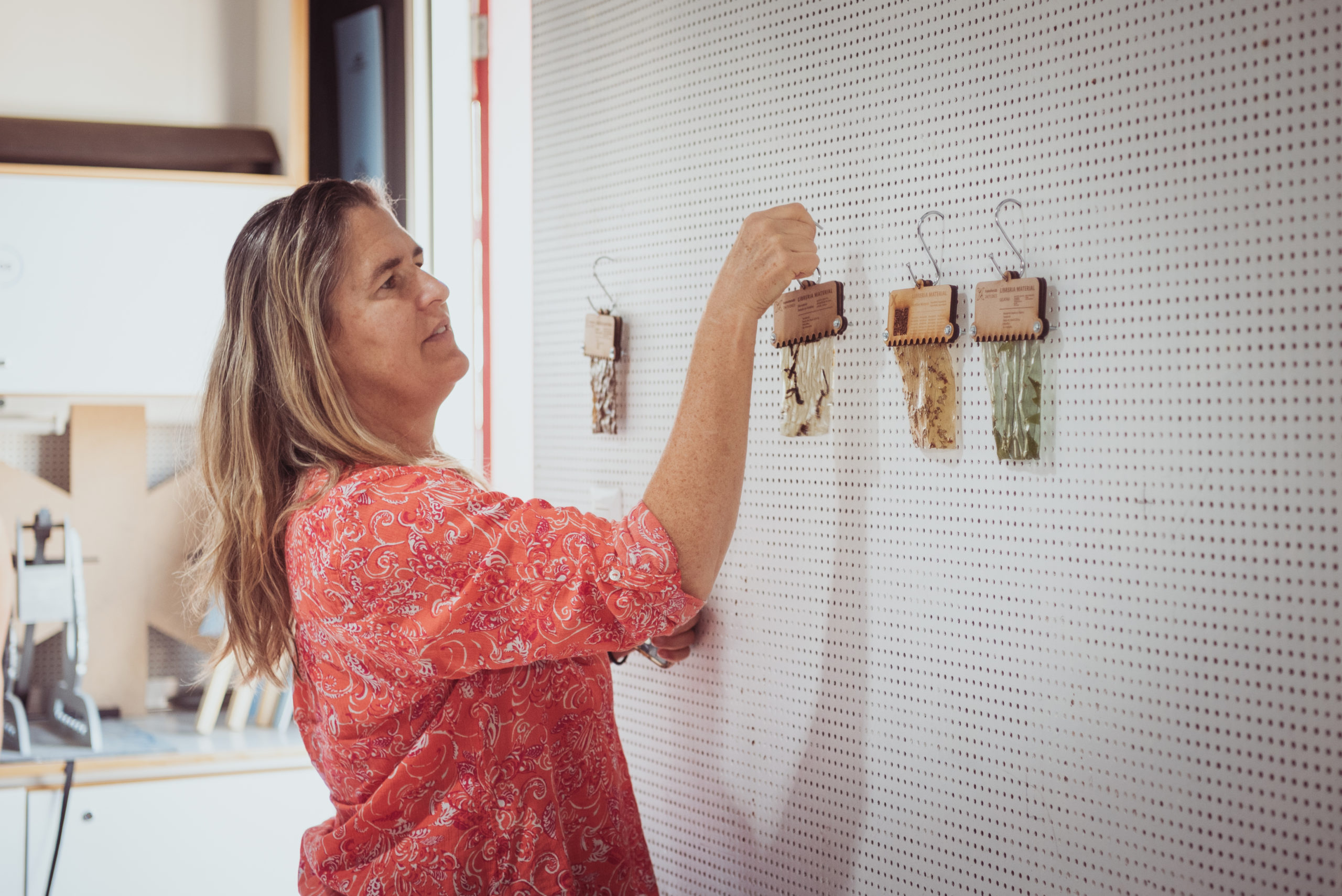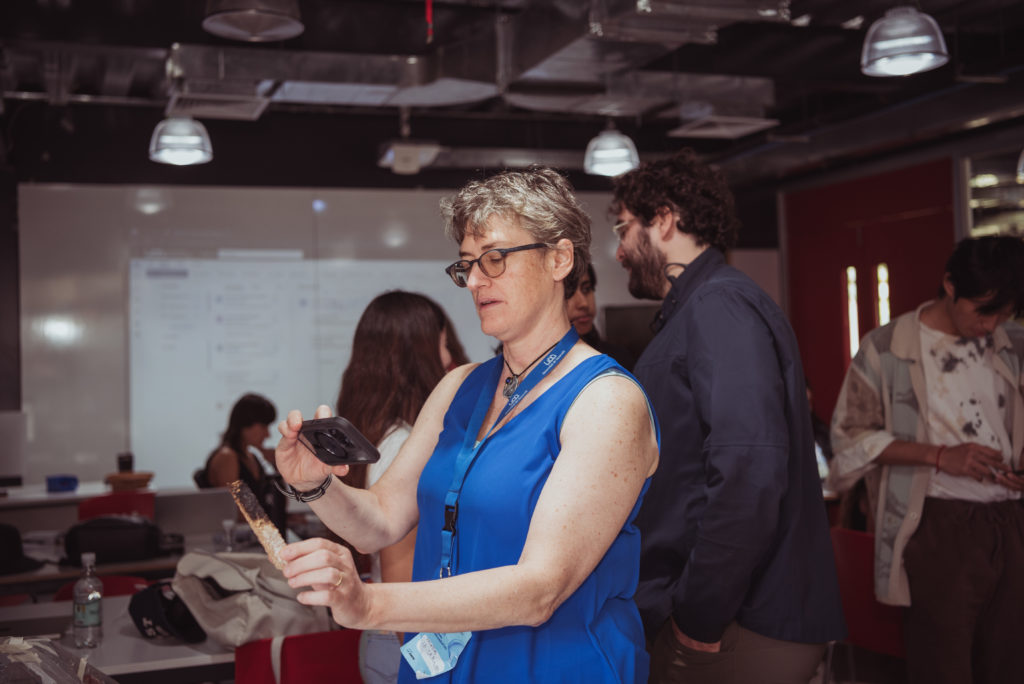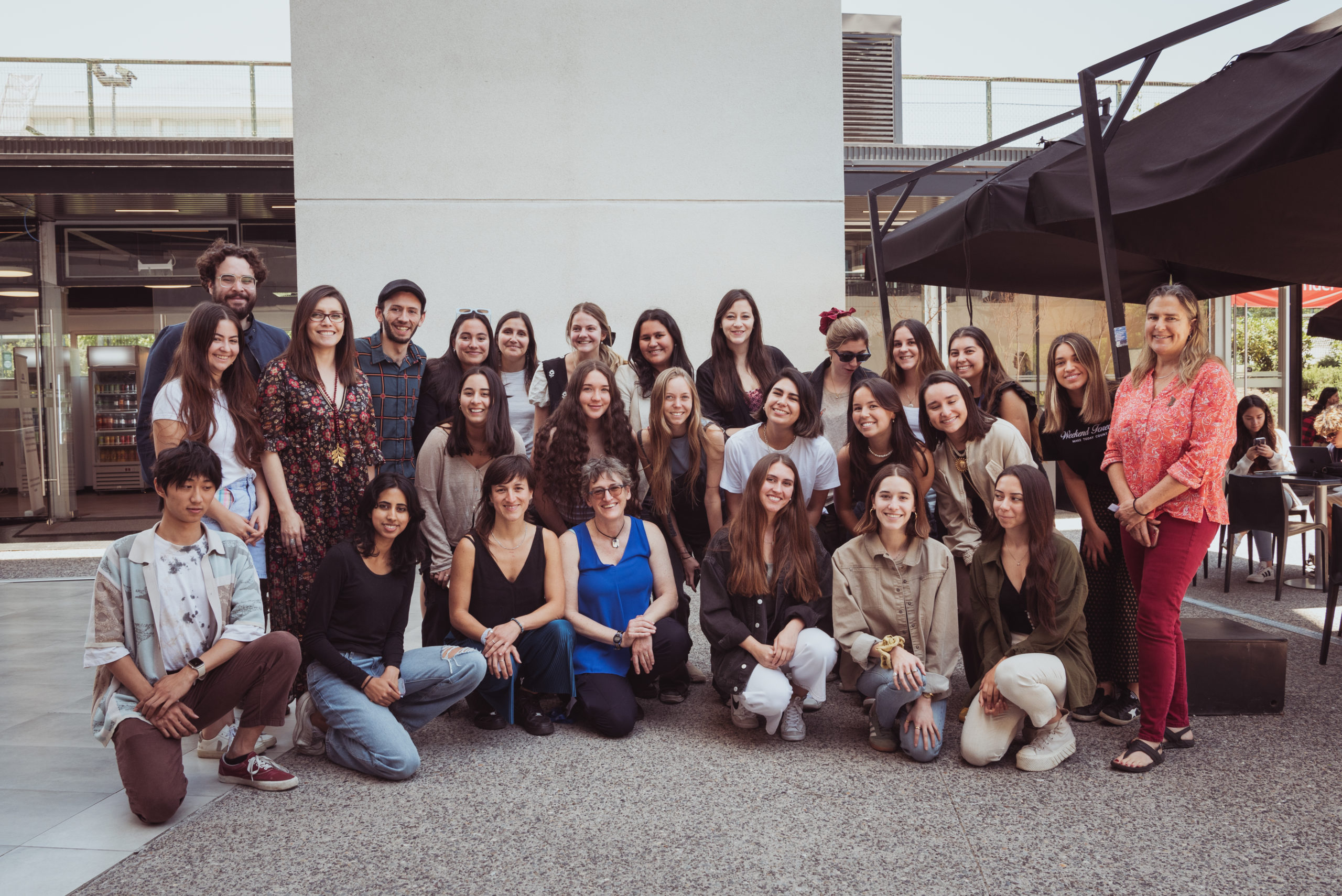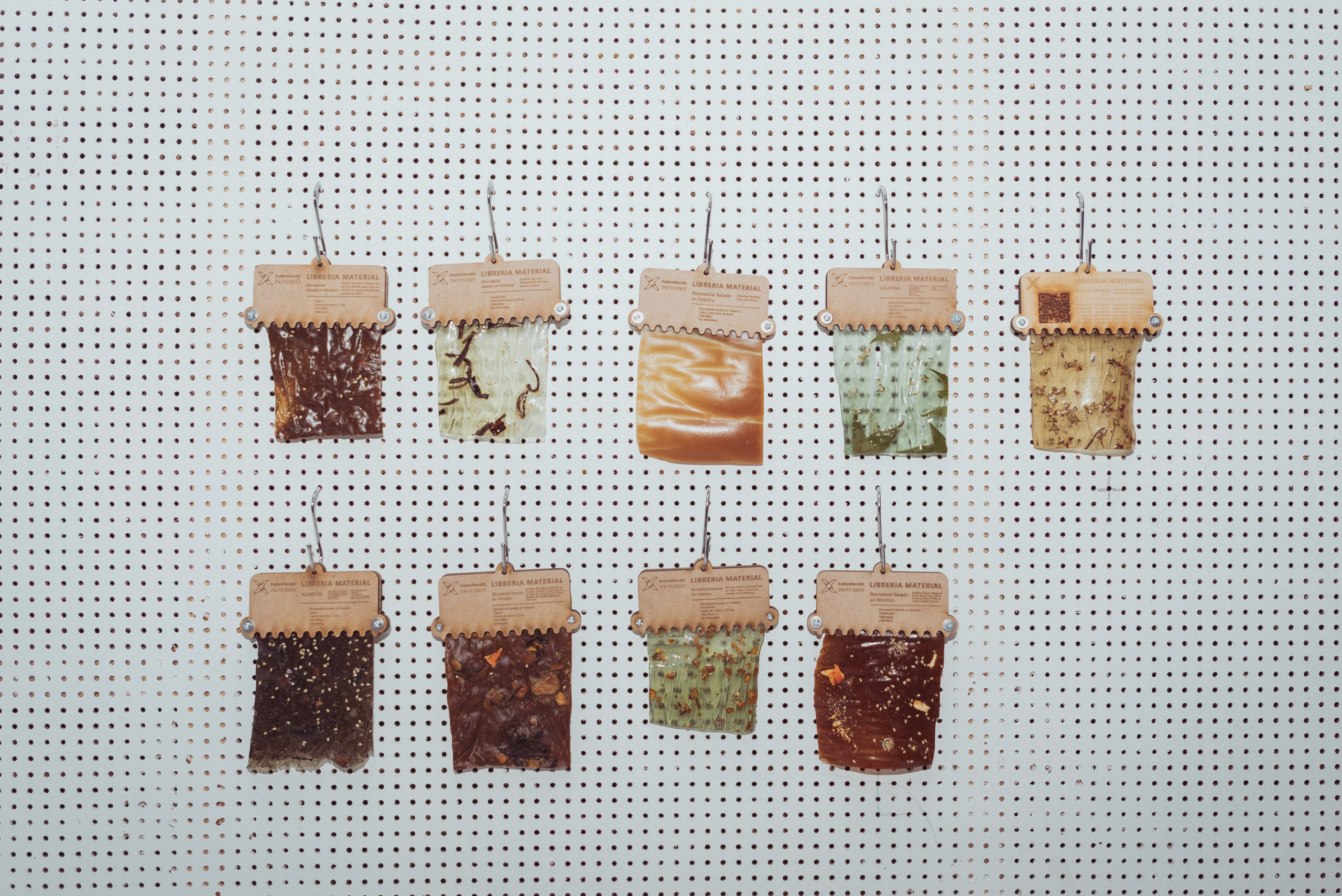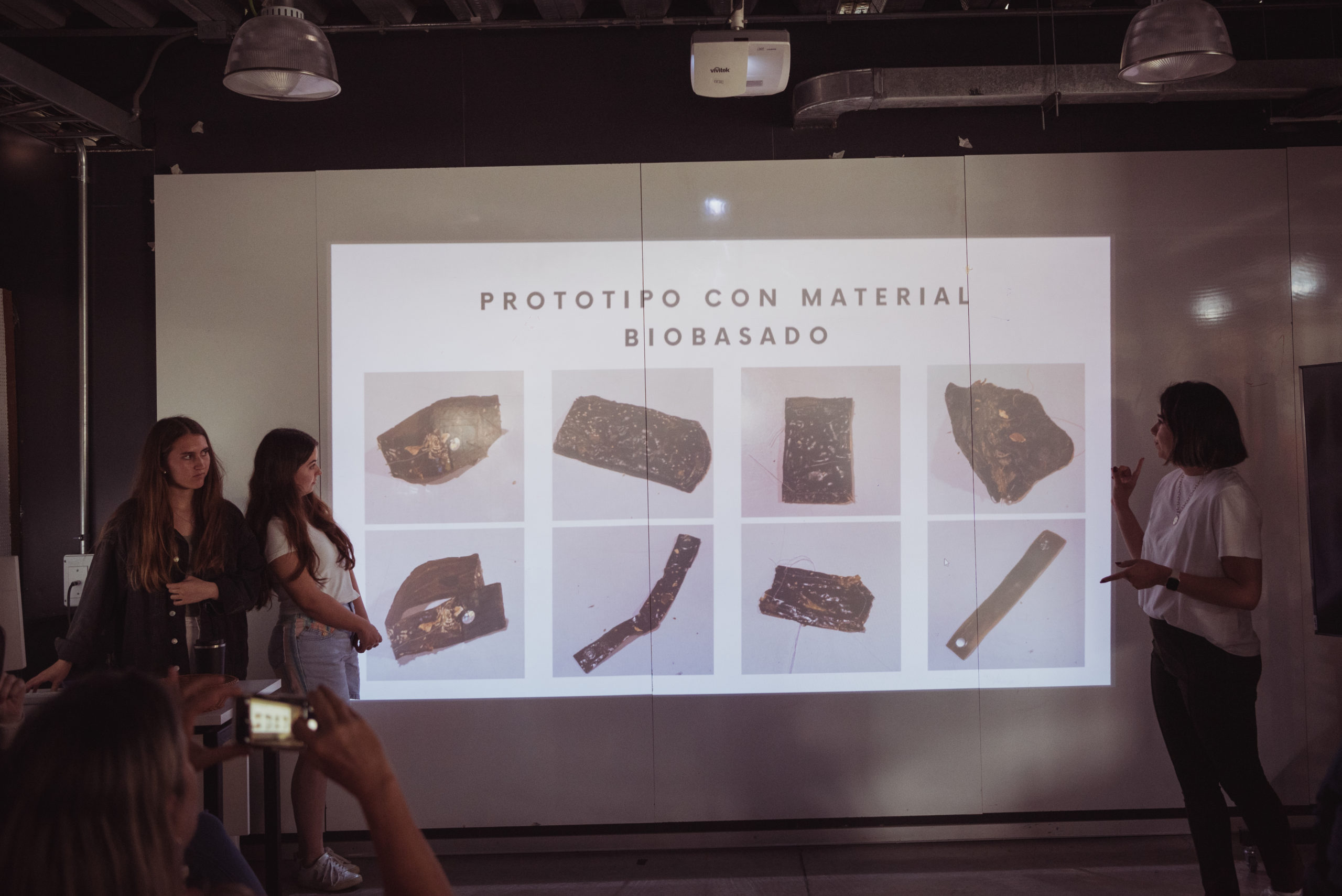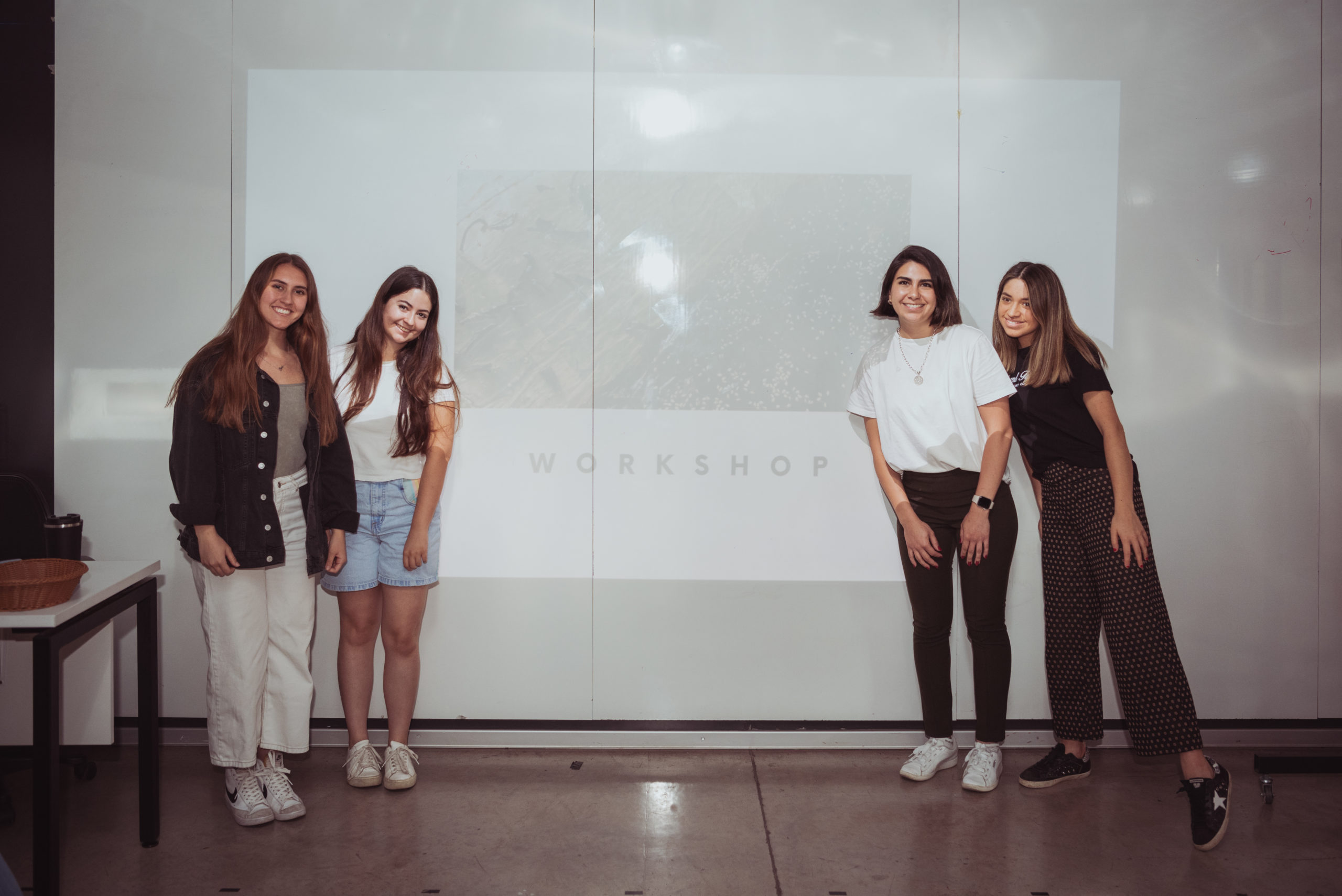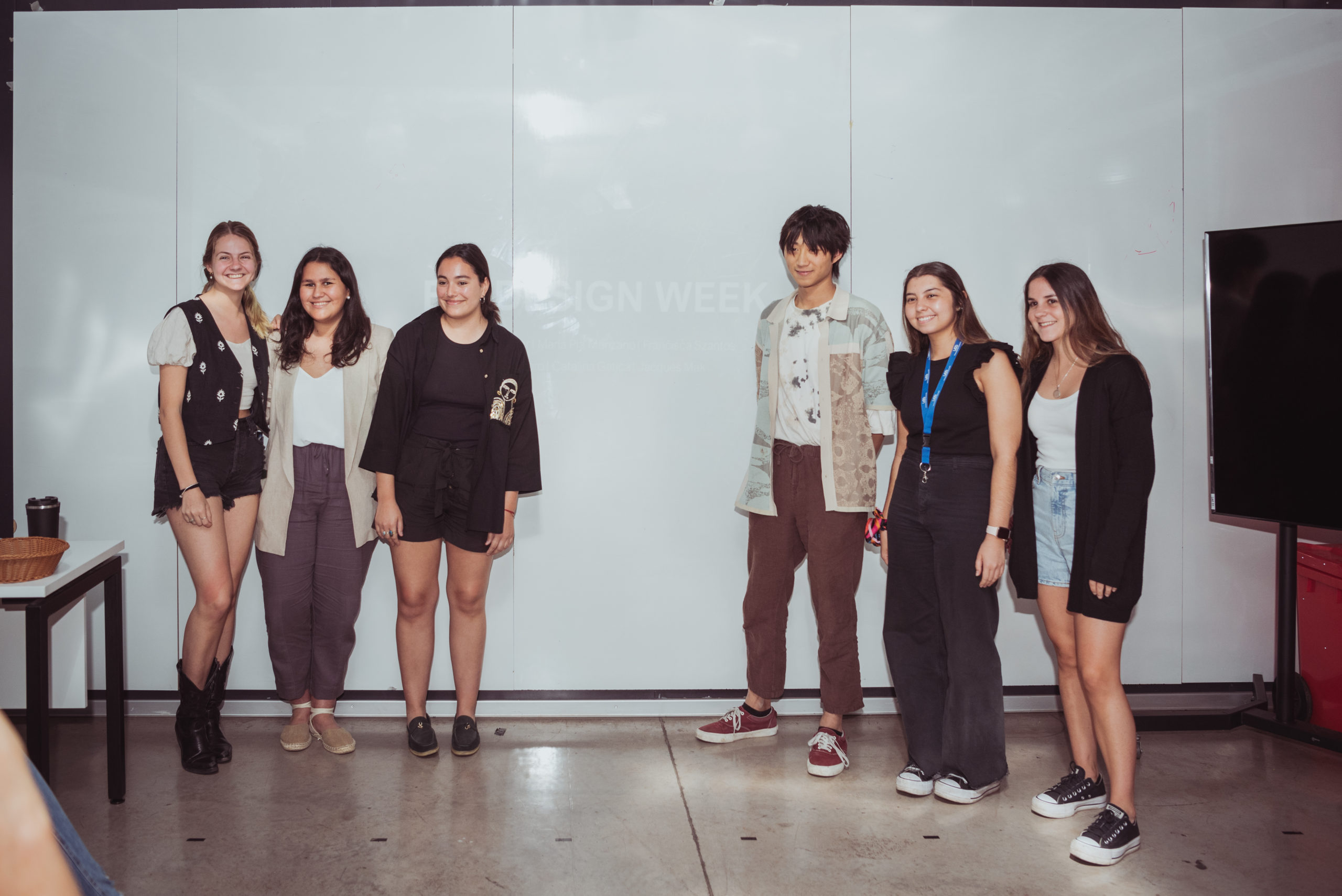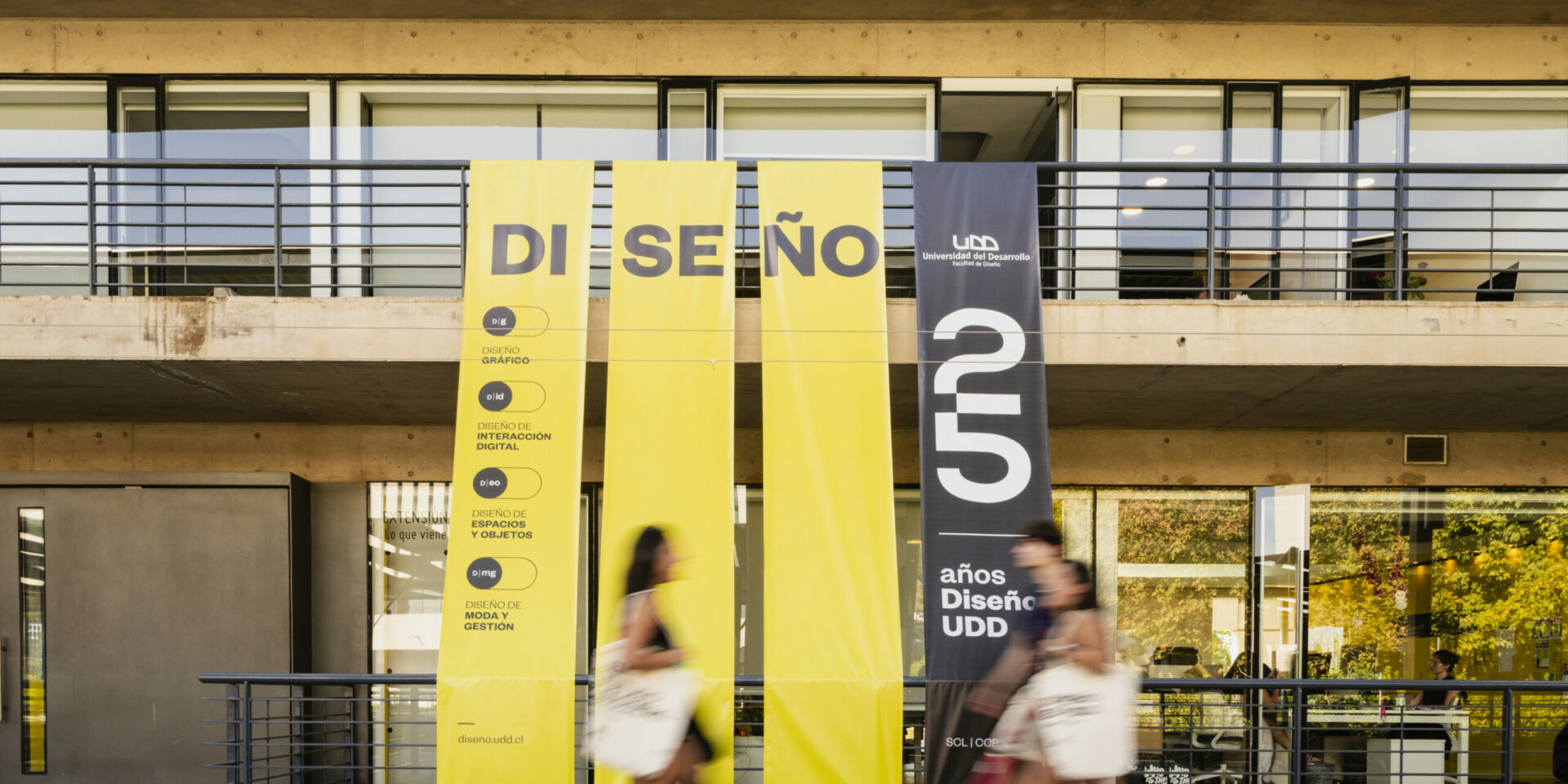
During an intense week, international experts collaborated with researchers and students from the Design School at UDD to enhance their partnership in biodesign research. This partnership also facilitates academic exchanges and aims to promote joint developments in this interdisciplinary area.
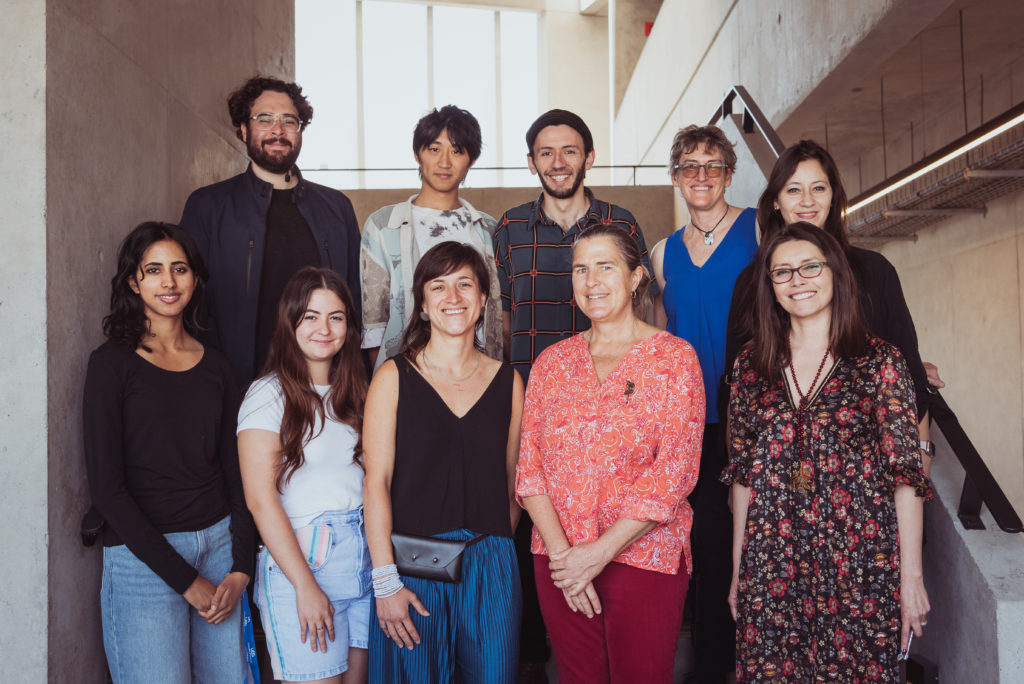
Christina Cogdell, Professor of Biodesign & Art, Architecture & Design History of the University of California Davis (UCD), in conjunction with the Schools of Design and Engineering of Universidad del Desarrollo (UDD), through its Centre for Technological Exploration, Exploratec, have been working with the researcher to promote biodesign in both institutions.
The meeting, called Biodesign and Industry Week, took place last November and was attended by leading international figures in the field, who participated in a seminar, talks and a workshop on biomaterials attended by 20 students from the Integrated Studio course.
All these activities were carried out thanks to the Grants for Interdisciplinary Research Collaboration for Sustainability, funding provided by UCD to support specific projects, academic studies, and others. This fund was applied for in the second semester of 2021 by both faculties and the North American researcher to promote educational links.
In her project «Growing Biodesign Collaborations for Increased Circularity», which is the basis for the funding awarded by UCD, Cogdell, who specialises in biodesign, highlights a greater need than ever to encourage student research in this area. «The new field of biodesign brings designers, bioscientists and other professionals together to accelerate the global transition to circular economies in sustainable environments. Driven by climate change and the urgent call for radical transformations in manufacturing and consumption, Biodesign addresses local and global problems using human-centred design thinking allied with bio-based materials and processes».

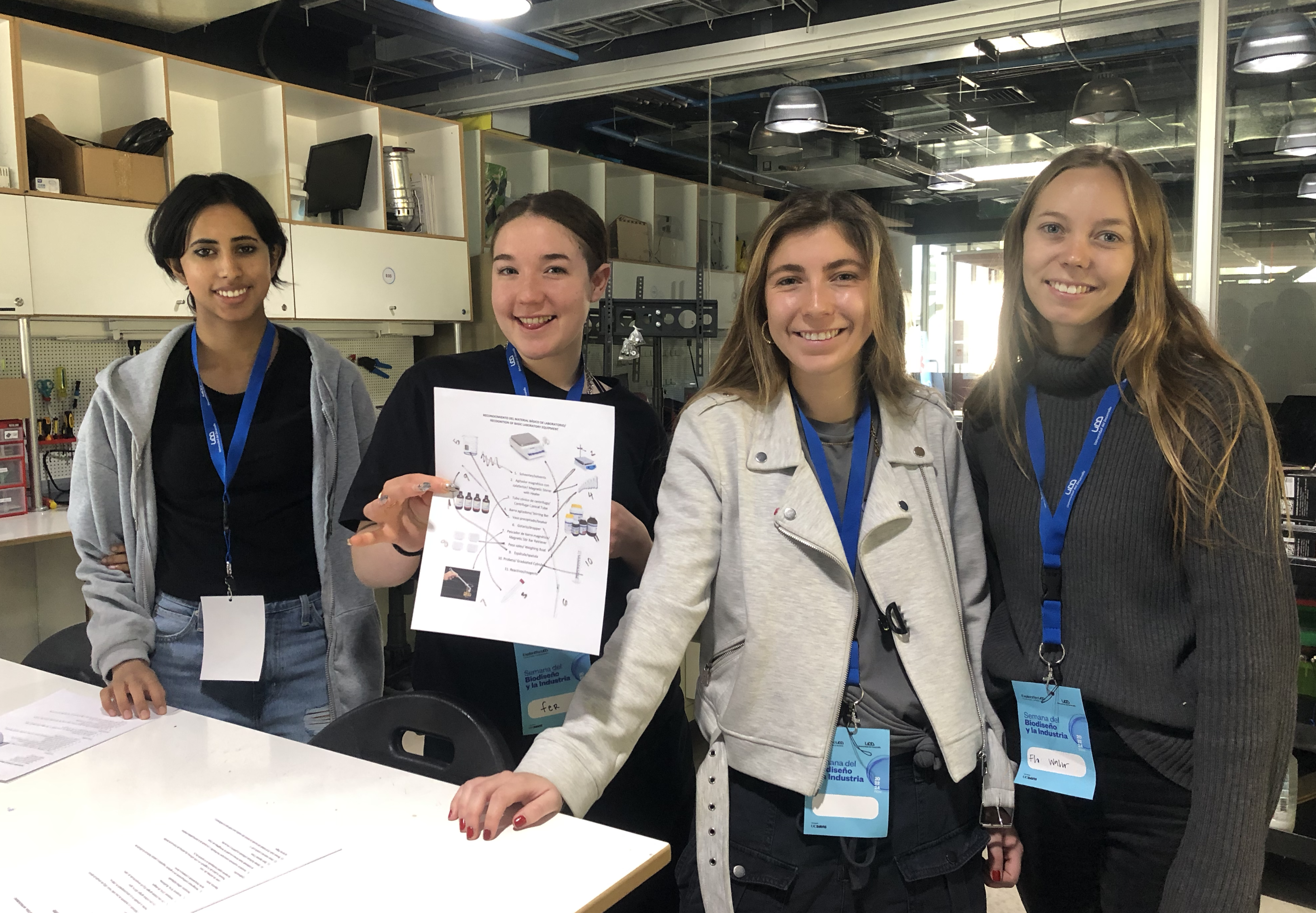
Coming together for biodesign
Biodesign is an interdisciplinary field that combines biology, engineering and design to develop innovative solutions inspired by nature. This approach seeks to harness biological principles and processes to address problems and create products or systems that are more efficient, sustainable, and adapted to the environment. In this context, Alejandra Amenábar, dean of the Design School, explains, «Since 2010, our students and professors have led degree projects and research initiatives focused on biomaterials and various raw materials. In joint work with the Directorate of Technology Transfer, iCono UDD, we managed to formalise biomaterials as a focus of technological development of the school, so we are committed to moving in this direction to train professionals aware of the responsibility of design in the production, use and disuse of products and materials».
For her part, the director of UDD Design Research, Paulina Contreras, adds, «The collaboration with Christina, through a grant from UC Davis, accelerates our progress in this area and highlights the possibility of generating initiatives that facilitate mutual learning. In our school, we have formed an interdisciplinary research team with Dr. Nataly Silva and collaborators in microbiology, chemistry, and materials, among other disciplines. Thus, we lead projects from design creativity, backed by a rigorous scientific approach that promotes knowledge transfer».
During a recent visit, Christina Goodell and Valeria La Saponara, researcher and Professor of Mechanical and Aerospace Engineering, respectively, hosted the International Seminar on Biodesign and New Manufacturing Methods. They showcased how Biodesign and biomaterials are changing the way we think about manufacturing processes and shared their insights on the intersection of interdisciplinary design, engineering, and biology.
Regarding this trip and her experience in Chile, Cogdell said that it had been an enriching experience. «The collaborative work between UC Davis and UDD has been fantastic, especially in facilitating our scholarship. These instances make it easier for us to get to know each other. Also, I learned a lot from UDD researcher Nataly Silva since, at UC Davis, we don’t have a chemist to collaborate with. After hearing her explain how chemistry can benefit biodesign and her understanding of molecules and structures, I now have a new appreciation and desire to work with a chemist at my university who can help us».
For Amenábar, this alliance has meant the possibility of having close links with a prestigious university and being able to provide academic feedback. «It is a luxury to have had Christina Gogdell and Valeria La Saponara visit. Our school has always been committed to training generations of designers capable of thinking beyond what has already been created to
As for the next steps, Cogdell explained she would like to repeat the event and add new activations. «In addition to having an international seminar with talks broadcast live, we have the idea of developing a library of ecological materials for UDD students because we want them to be able to learn about new materials from the beginning of their design career. If they have samples, they can touch them and learn how to make them; they can have the recipes available. This facilitates a much faster acceleration in these materials. Our goal was to take the beginnings of what we had at UC Davis with the green materials lab and apply it here, and we did an outstanding job».
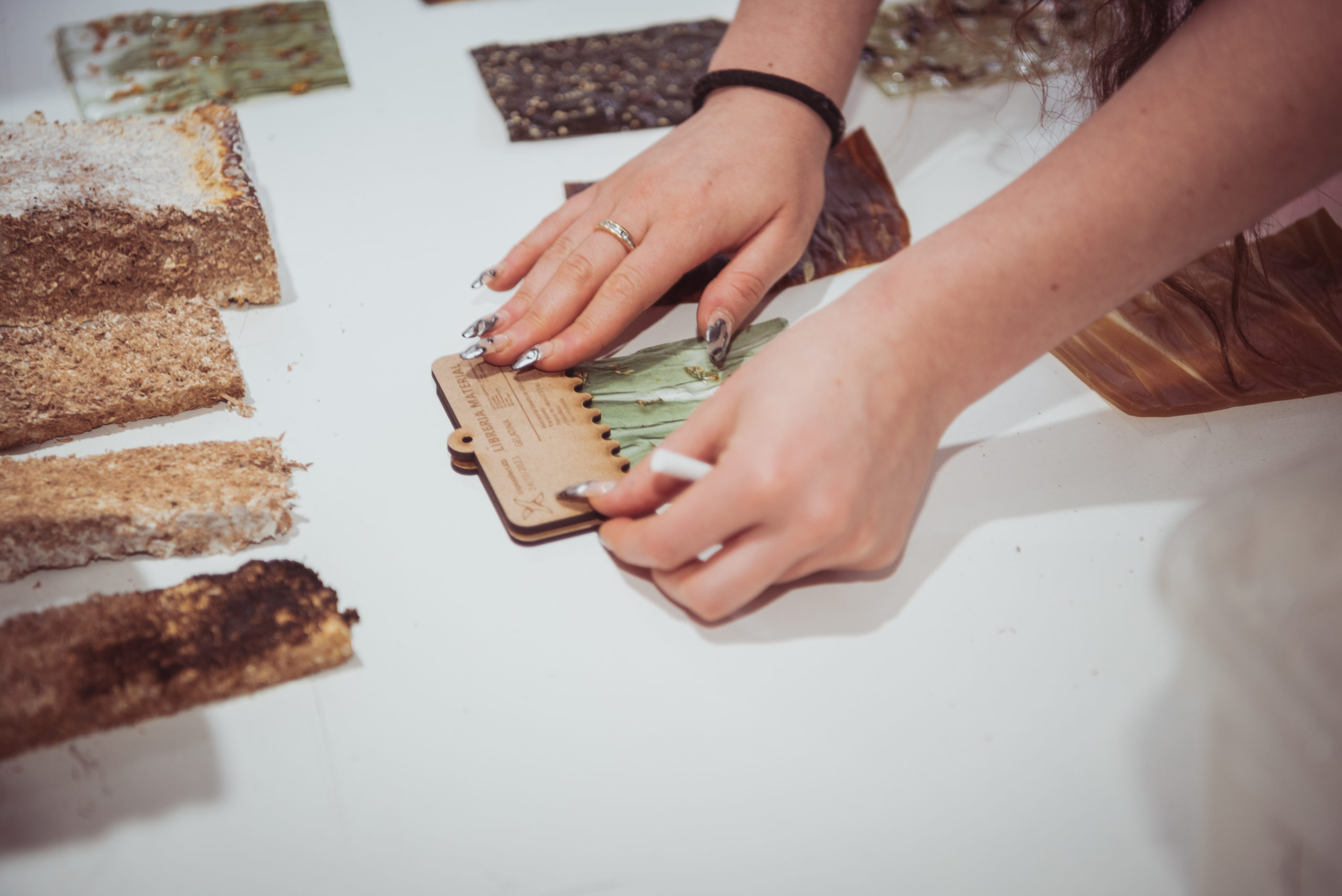
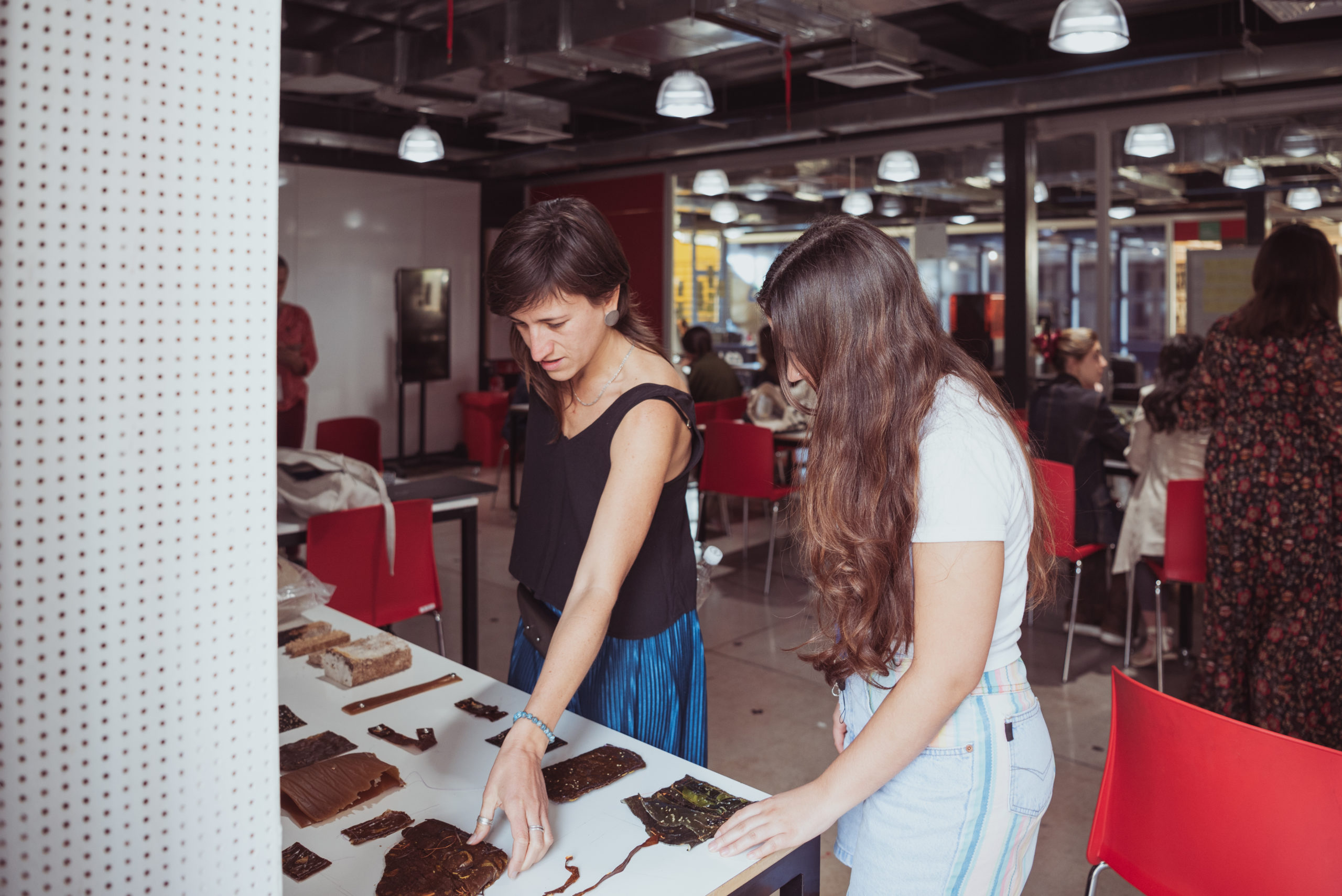

Experiencing biomaterials
The intensive workshop given during the visit of the UC Davis delegation consisted of manufacturing bio-based materials from gelatine and starch with antimicrobial properties by incorporating copper nanoparticles, which the students themselves learned to develop through various methods: electrolysis, sonication and chemical reduction using natural resources. They also developed biofabricated materials using mycelium. The materials were characterised by evaluating some physical, chemical and mechanical properties. Finally, design strategies were used to define the potential application, ending with prototypes from the generated materials.
Constanza Gutiérrez, an integrated studio student majoring in the Design of Spaces and Objects major, said the link with UC Davis was very positive. «Learning from them was one of the most exciting parts because we work with different disciplines and ways of working».
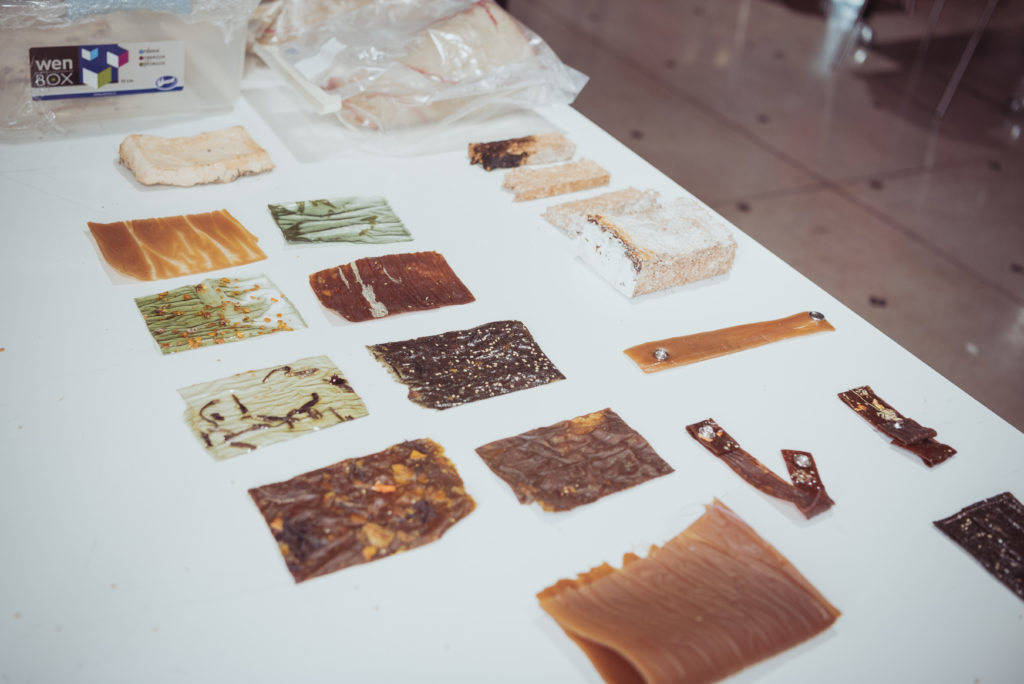
Francisca Szanto, a Graphic Design student, added that there is an excellent opportunity for future designers in Biodesign. «Nowadays, there is a strong trend towards biodegradable and ‘bio’ in general, so we are in time to implement this new way of designing, whether in packaging, clothing, or textiles. We must open our eyes and options to try different materials and make them a contribution both to design and to the world in general».
Nataly Silva is a researcher at Diseño UDD. She has a PhD in Chemistry from the University of Chile and is an expert in nanotechnology and materials. She also teaches the Integrated Studio, a fourth-year course that involves students from all UDD Design majors, such as Fashion and Management, Spaces and Objects, Digital Interaction and Graphic Design. Nataly explained that the week was a tremendous experience for her. She found it «highly challenging because a series of activities were carried out quickly and with students and researchers from different disciplines. Among the activities they carried out were generating biomaterials and antimicrobial nanomaterials and characterising their properties».
